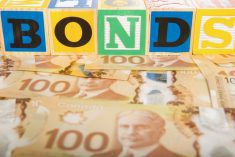Stocks, like other commodities, trade based on supply and demand except, unlike many commodities, both supply and demand are elastic. If there is a short canola crop more can’t be made until the following year, regardless of demand. But if there is high demand for stocks — voilà. Wall Street makes more by accepting more corporate pitches to go public. That’s an elastic supply, or as they themselves joke, “When the ducks quack, feed them.”
How do they know when demand is high? Simple — when current stocks are increasing in price and are trading at increasing multiples of earnings and cash flow. Prior to 2020-21, the record years for initial public offerings (IPOs) were 1999 and 2000 with 473 and 397, respectively (U.S. data). That era is now referred to as the dot-com bubble. Many of those companies went broke shortly afterwards. Company founders and Wall Street made money but speculators, who thought they were investors, were left holding the bag.
Read Also

Gentle treatments for pain in the neck
Heading toward year-end, people unknowingly tense up against the cold and busyness, causing neck pain that can often be treated with appropriate support and gentle mobility, athletic therapist Kathlyn Hossack says.
Guess what years had the lowest number of IPOs? If high markets lead to a lot of IPOs, then low markets must lead to a low number of IPOs and, indeed, 2008 and 2009 had a scant 62 and 79 IPOs, respectively.
How many IPOs have there been recently? In 2020, there were 480, slightly besting the previous peak. This was followed by an astounding 1,058 in 2021, smashing the record. If stocks trade based on supply and demand and supply goes through the roof, what happens to price? It’s not a matter of if but when, and that when began in March of 2021 and has picked up speed recently.
Tech and green energy
Tech and green energy were the dominant themes of this IPO deluge. Electric vehicle battery developer QuantumScape went public via a SPAC (special purpose acquisition company) on November 28, 2020, at $23.50 per share and surged 57 per cent its first day. The Biden presidential win caused a wave of enthusiasm for alternative energy companies. Within a month it peaked at $132 with a market cap of $33 billion, making it more valuable than Canada’s largest oil company, Suncor, at the time. It had no sales and still doesn’t. Bleeding cash, it has since lost almost 90 per cent of its value trading at $16 per share, but what is it worth? I have no idea because I don’t know how to valuate stories.
Robinhood is a new trading platform that attracted a huge following by gamifying investing, really speculating. It had about 10 million users pre-COVID with usage soaring to 22 million through the pandemic. Speculators with excess cash, partly from government payments, sat at home, bored, and turned to stocks as entertainment. It went public on July 29, 2021, at an IPO price of $38 per share. Its first day saw a modest decline but it quickly reversed and soared to $85. It lost $7.49 per share in 2021 and, as I write, is trading at about $14 — but what’s it worth? I don’t know because I don’t know how to valuate stories.
Robinhood motivates activities completely opposite to what I promote. Its revenue peaked in the second quarter of 2021 coincident with the IPO timing and declined relative to this peak in both the third and fourth quarters. Perhaps its customers are realizing their losses and going back to work.
Ark Innovation ETF (exchange-traded fund) was founded in 2014 and became famous in the investment world with eye-popping returns for a five-year stretch, peaking at $159 a year ago. The ETF holds the types of “new, innovative companies” I am writing about. During that five-year stretch it outperformed the S&P 500 by four times. It has been downhill since the peak and now has a value of $74, still performing somewhat better than the S&P 500 over the same time frame.
However, most investors have not done well by it because the vast majority of fund inflows occurred at the peak. It had just $3.2 billion under management early in 2020 and closed out the year with fund inflows of almost that amount per month, peaking at $51 billion in assets early in 2021. Fund outflows began in earnest during July of 2021, proving once again that traders and speculators often buy high and sell low. Chasing performance is a common but futile activity.
Stock promotors often refer to a new IPO as the next Microsoft, or the next Google. When you read that run away! While a few superstar companies like Google and Amazon grew out of the dot-com bubble, not many are still in existence.
The great thing is great companies exist for 100 years or more. There’s a lot of time to get on the bus after a company has proven it has staying power, and when you can buy the numbers.















